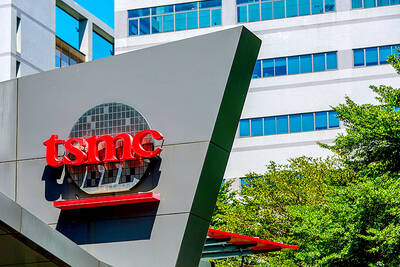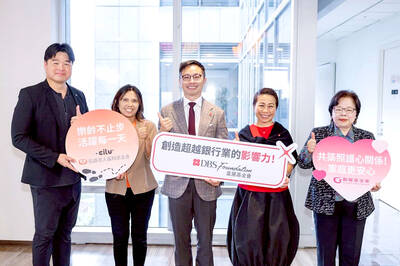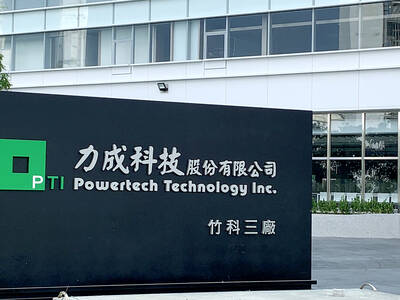The Financial Supervisory Commission (FSC) said yesterday DBS Bank (星展銀行) would need a capital injection from its Singaporean parent both to meet tightened capital requirements and to qualify for its plan to upgrade a local branch to a subsidiary in the third quarter next year.
Foreign banks must maintain at least NT$200 million (US$6.6 million) in working capital — up from NT$100 million before the commission changed the requirements in December last year to enhance risk control — for each individual branch in Taiwan, with the threshold rising to NT$250 million if the branches take deposits from individuals.
All 28 foreign banks operating in the country were given one year to make the adjustment and DBS is the only foreign lender that has yet to meet the requirement, the commission said.
Chang Kuo-ming (張國銘), deputy director-general at the commission’s banking bureau, said DBS has applied to increase capital by NT$5.95 billion before Dec. 1 and the fund may help meet the upgrade requirement later.
A banking subsidiary must maintain NT$10 billion in working capital, as required of all domestic lenders, and is subject to the commission’s regular stress tests, Chang said.
DBS, the largest lender in Southeast Asia by assets, is scheduled to celebrate relocations of three branches acquired from Bowa Bank (寶華銀行) next week in a continued bid to strengthen its presence in Taiwan, the Singapore-based lender said in a statement yesterday.
One branch is located in the prime Xinyi District (信義), where the bank plans to move its Taipei headquarters in the first half of next year and upgrade to a subsidiary in the third quarter, the bank said.
DBS has said it aims to become one of the top three foreign banks in Taiwan in five years’ time and has increased investment on infrastructure facilities and personnel expansions.
The branch relocations to more populous areas in Taipei and Taichung cities on Wednesday next week are similar moves to realize the bank’s ambition, DBS said.
The bank posted a net profit of NT$145 million for the first nine months of this year, slumping 68.95 percent from a year earlier as bad loan costs rose 2.36 times to NT$484.11 million, from NT$143.90 million, company statistics showed.
Net fee income more than doubled to NT$488.27 million during the January-to-September period from NT$238.12 million a year earlier, while net interest income rose 22 percent to NT$147 million billion from NT$120 million, the lender’s data showed.

RUN IT BACK: A succesful first project working with hyperscalers to design chips encouraged MediaTek to start a second project, aiming to hit stride in 2028 MediaTek Inc (聯發科), the world’s biggest smartphone chip supplier, yesterday said it is engaging a second hyperscaler to help design artificial intelligence (AI) accelerators used in data centers following a similar project expected to generate revenue streams soon. The first AI accelerator project is to bring in US$1 billion revenue next year and several billion US dollars more in 2027, MediaTek chief executive officer Rick Tsai (蔡力行) told a virtual investor conference yesterday. The second AI accelerator project is expected to contribute to revenue beginning in 2028, Tsai said. MediaTek yesterday raised its revenue forecast for the global AI accelerator used

Taiwan Semiconductor Manufacturing Co (TSMC, 台積電) has secured three construction permits for its plan to build a state-of-the-art A14 wafer fab in Taichung, and is likely to start construction soon, the Central Taiwan Science Park Bureau said yesterday. Speaking with CNA, Wang Chun-chieh (王俊傑), deputy director general of the science park bureau, said the world’s largest contract chipmaker has received three construction permits — one to build a fab to roll out sophisticated chips, another to build a central utility plant to provide water and electricity for the facility and the other to build three office buildings. With the three permits, TSMC

The DBS Foundation yesterday announced the launch of two flagship programs, “Silver Motion” and “Happier Caregiver, Healthier Seniors,” in partnership with CCILU Ltd, Hondao Senior Citizens’ Welfare Foundation and the Garden of Hope Foundation to help Taiwan face the challenges of a rapidly aging population. The foundation said it would invest S$4.91 million (US$3.8 million) over three years to foster inclusion and resilience in an aging society. “Aging may bring challenges, but it also brings opportunities. With many Asian markets rapidly becoming super-aged, the DBS Foundation is working with a regional ecosystem of like-minded partners across the private, public and people sectors

BREAKTHROUGH TECH: Powertech expects its fan-out PLP system to become mainstream, saying it can offer three-times greater production throughput Chip packaging service provider Powertech Technology Inc (力成科技) plans to more than double its capital expenditures next year to more than NT$40 billion (US$1.31 billion) as demand for its new panel-level packaging (PLP) technology, primarily used in chips for artificial intelligence (AI) applications, has greatly exceeded what it can supply. A significant portion of the budget, about US$1 billion, would be earmarked for fan-out PLP technology, Powertech told investors yesterday. Its heavy investment in fan-out PLP technology over the past 10 years is expected to bear fruit in 2027 after the technology enters volume production, it said, adding that the tech would